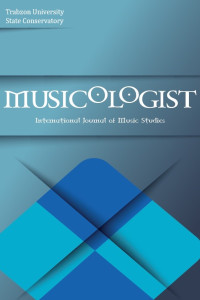Abstract
References
- Bell, Catherine. (2009). Ritual Theory, Ritual Practice. New York: Oxford University Press.
- Öngören, Reşat. (2013). Zikir (Dhikr). TDV İslâm Ansiklopedisi. Retrieved from https://islamansiklopedisi.org.tr/zikir (20.06.2022)
- Özervarlı, M. Sait. (2001). Kadir Gecesi (Qadr Night). TDV İslâm Ansiklopedisi. Retrieved from https://islamansiklopedisi.org.tr/kadir-gecesi (20.06.2022)
- Özkan, İsmail Hakkı. (2001). Kaside (Qasida). TDV İslâm Ansiklopedisi. Retrieved from https://islamansiklopedisi.org.tr/kaside (20.06.2022)
- Uzun, Mustafa İsmet. (2000). İlahi (Hymn). TDV İslâm Ansiklopedisi. Retrieved from https://islamansiklopedisi.org.tr/ilahi (20.06.2022)
- Rappaport, Roy. A. (1974). “Obvious Aspects of Ritual” Cambridge Anthropology, 2(1): 3–69.
- Rappaport, Roy. A. 1979). Ecology, Meaning and Religion. Richmond, Calif.: North Atlantic Books.
- Rappaport, Roy. A. (1999). Ritual and Religion in the Making of Humanity. United Kingdom: Cambridge University Press.
Abstract
For four hundred years, the zikir ritual has been performed weekly in Kadirîhâne in Istanbul. Sufi rituals are believed to have been compiled by the founder (pîr) of the order. The ritual conductor (şeyh, postnişin) symbolizes the founder. The ritual form consists of chanting (dhikr) several divine names (esmâ). While participants perform the divine names with drone-like melodic repetitions or guttural rhythmic ostinatos, musicians perform songs, recitations, and improvisations. Through rhythmic enunciation, body sway, and breath control, these chants are embodied as ostinatos while music varies the mood. The ostinato polyphony between the derviş and zakir, as well as the succession of the divine names symbolizes unity (tevhid) in different ways. The manners and the formality of the ritual (ethics) and their musical expressions (aesthetics) implies harmony that leads to communal and/or individual unity. This article examines the form and content of the ritual, and shows their relation to Sufi concepts.
References
- Bell, Catherine. (2009). Ritual Theory, Ritual Practice. New York: Oxford University Press.
- Öngören, Reşat. (2013). Zikir (Dhikr). TDV İslâm Ansiklopedisi. Retrieved from https://islamansiklopedisi.org.tr/zikir (20.06.2022)
- Özervarlı, M. Sait. (2001). Kadir Gecesi (Qadr Night). TDV İslâm Ansiklopedisi. Retrieved from https://islamansiklopedisi.org.tr/kadir-gecesi (20.06.2022)
- Özkan, İsmail Hakkı. (2001). Kaside (Qasida). TDV İslâm Ansiklopedisi. Retrieved from https://islamansiklopedisi.org.tr/kaside (20.06.2022)
- Uzun, Mustafa İsmet. (2000). İlahi (Hymn). TDV İslâm Ansiklopedisi. Retrieved from https://islamansiklopedisi.org.tr/ilahi (20.06.2022)
- Rappaport, Roy. A. (1974). “Obvious Aspects of Ritual” Cambridge Anthropology, 2(1): 3–69.
- Rappaport, Roy. A. 1979). Ecology, Meaning and Religion. Richmond, Calif.: North Atlantic Books.
- Rappaport, Roy. A. (1999). Ritual and Religion in the Making of Humanity. United Kingdom: Cambridge University Press.
Details
| Primary Language | English |
|---|---|
| Subjects | Anthropology, Music, Dance and Choreography |
| Journal Section | Articles |
| Authors | |
| Publication Date | December 31, 2022 |
| Published in Issue | Year 2022 Volume: 6 Issue: 2 |


